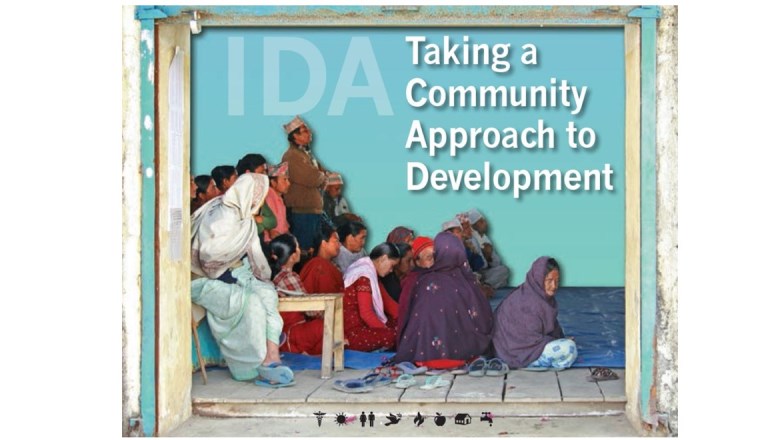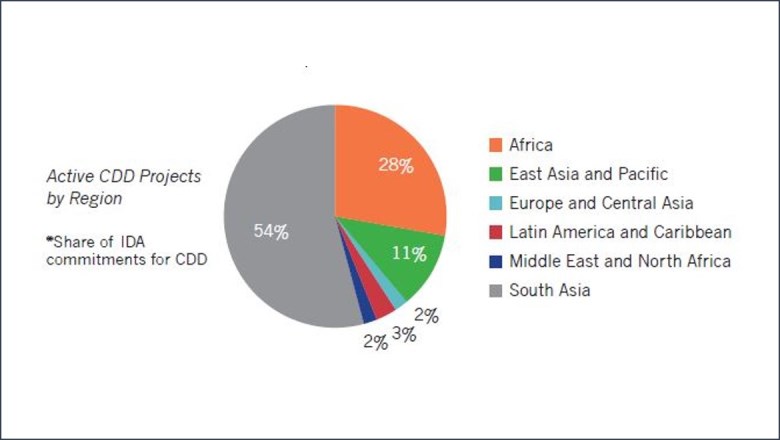The World Bank has supported CDD in IDA countries to help address a variety of urgent needs, including water supply and sanitation, school and health post construction, nutrition programs for mothers and infants, rural access roads, and support for micro-enterprises. CDD has proven useful in responding to conflict and fragility, and in post-disaster contexts, as it has shown to be fast, flexible and effective at re-establishing basic services. In fragile or conflict affected states (FCS), the approach has also helped rebuild social capital and trust within communities, and between communities and governments.
The World Bank has a robust IDA-financed CDD portfolio. As of August 2016, there were 100 active projects in 45 IDA countries with a total of approximately US$10.2 billion dedicated to CDD. The South Asia and Africa regions have the largest share of the active CDD portfolio (33 projects worth US$5.5 billion and 34 projects worth US$2.8 billion, respectively.) India has the largest country portfolio: 18 projects worth US$3.7 billion.

